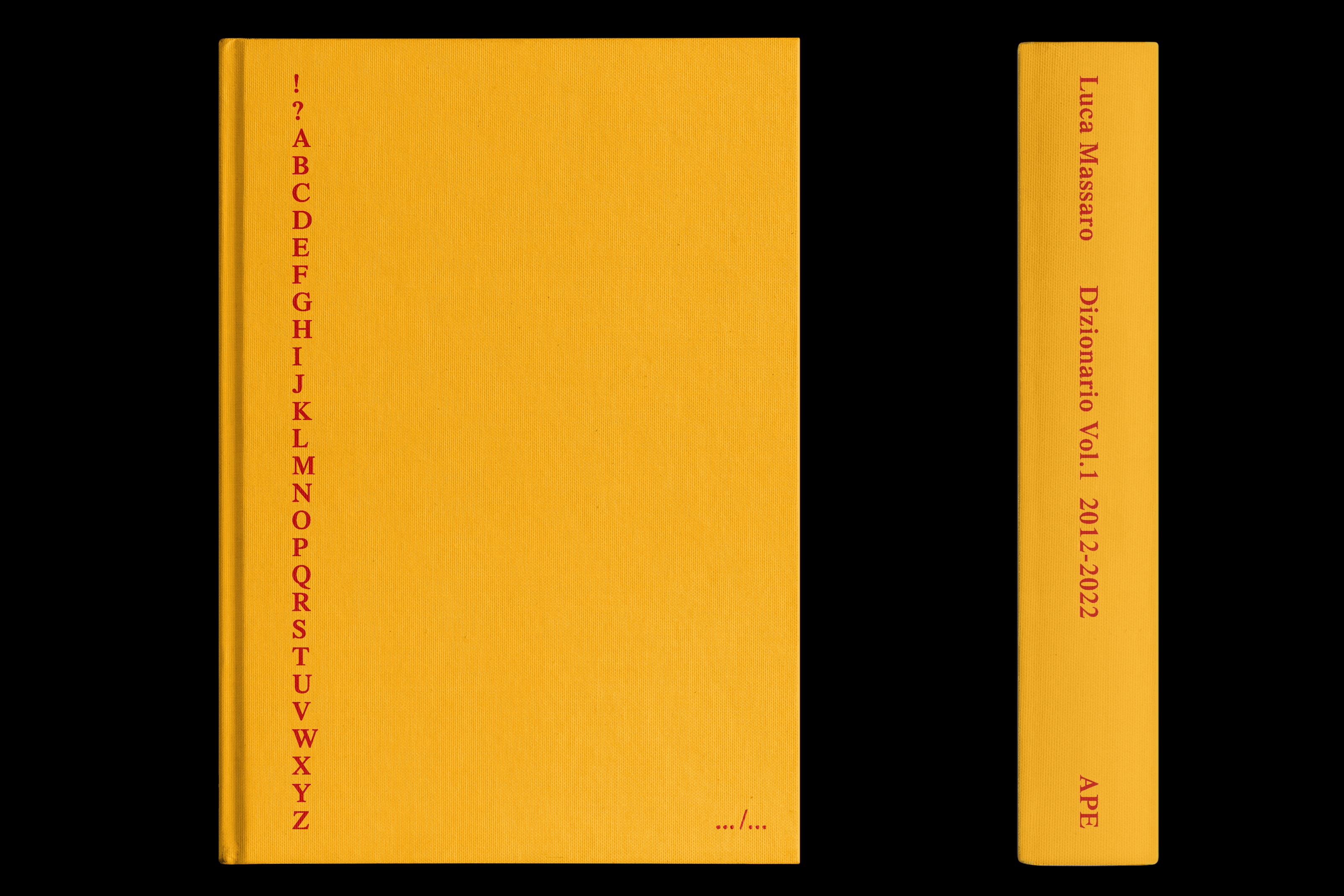


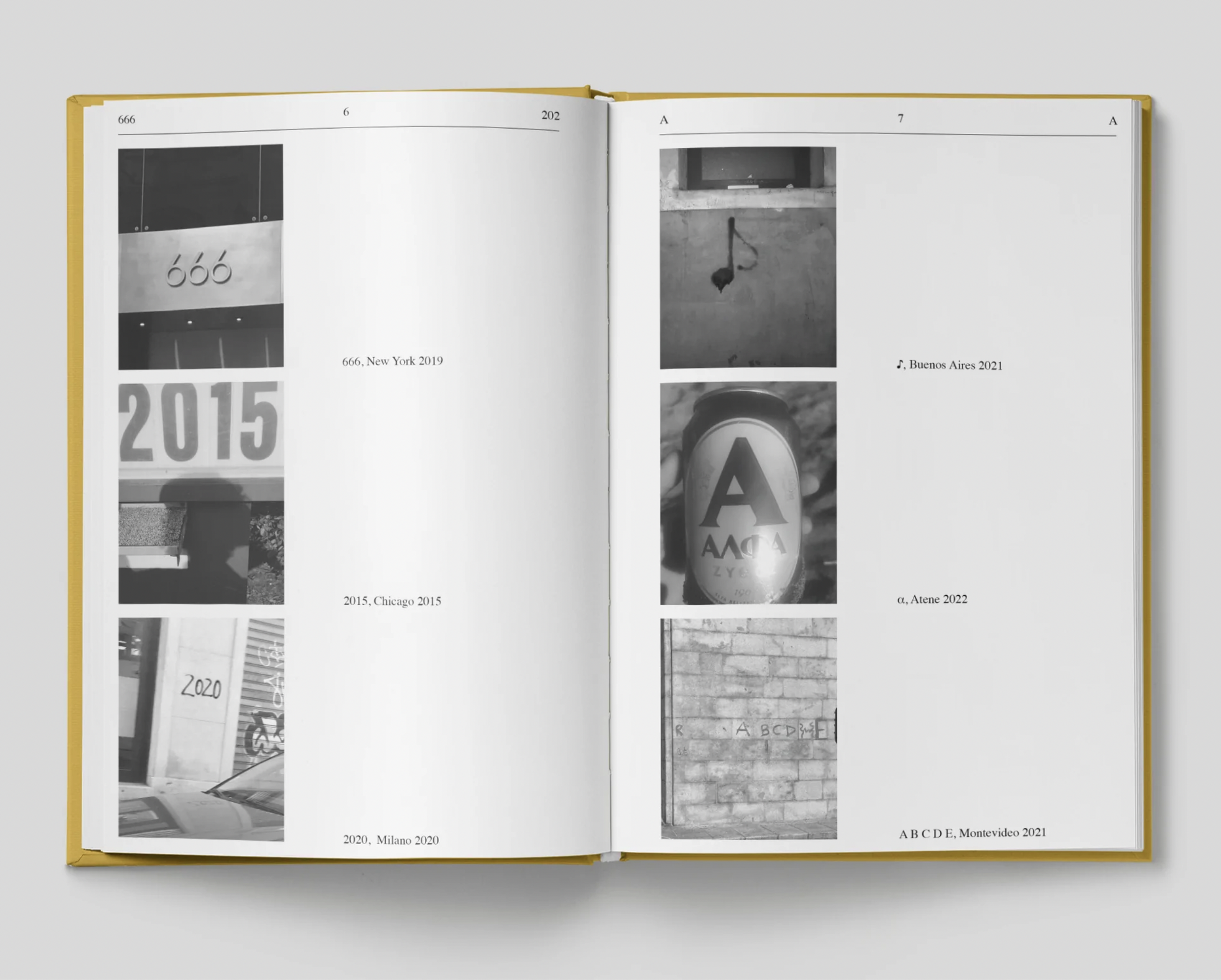

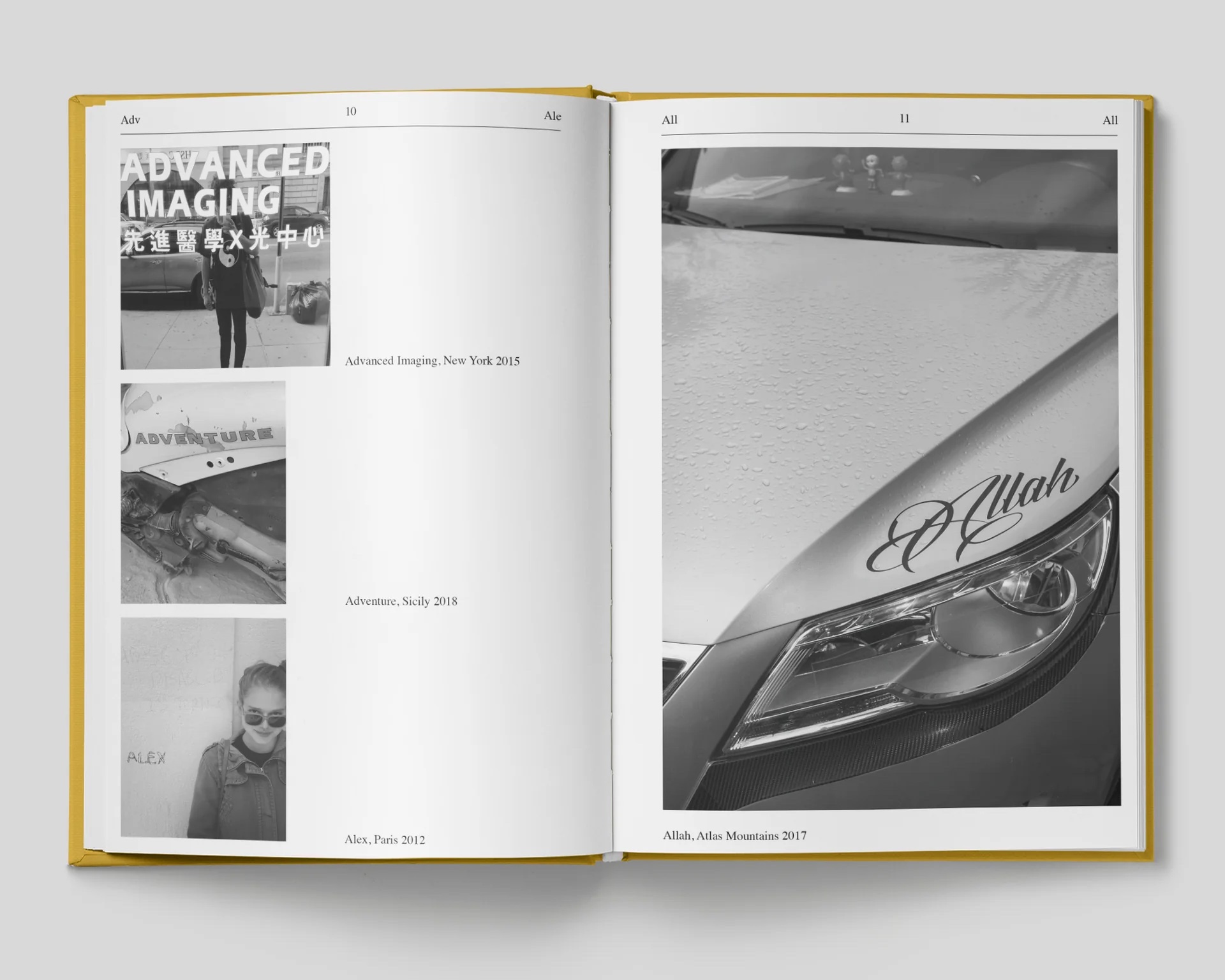

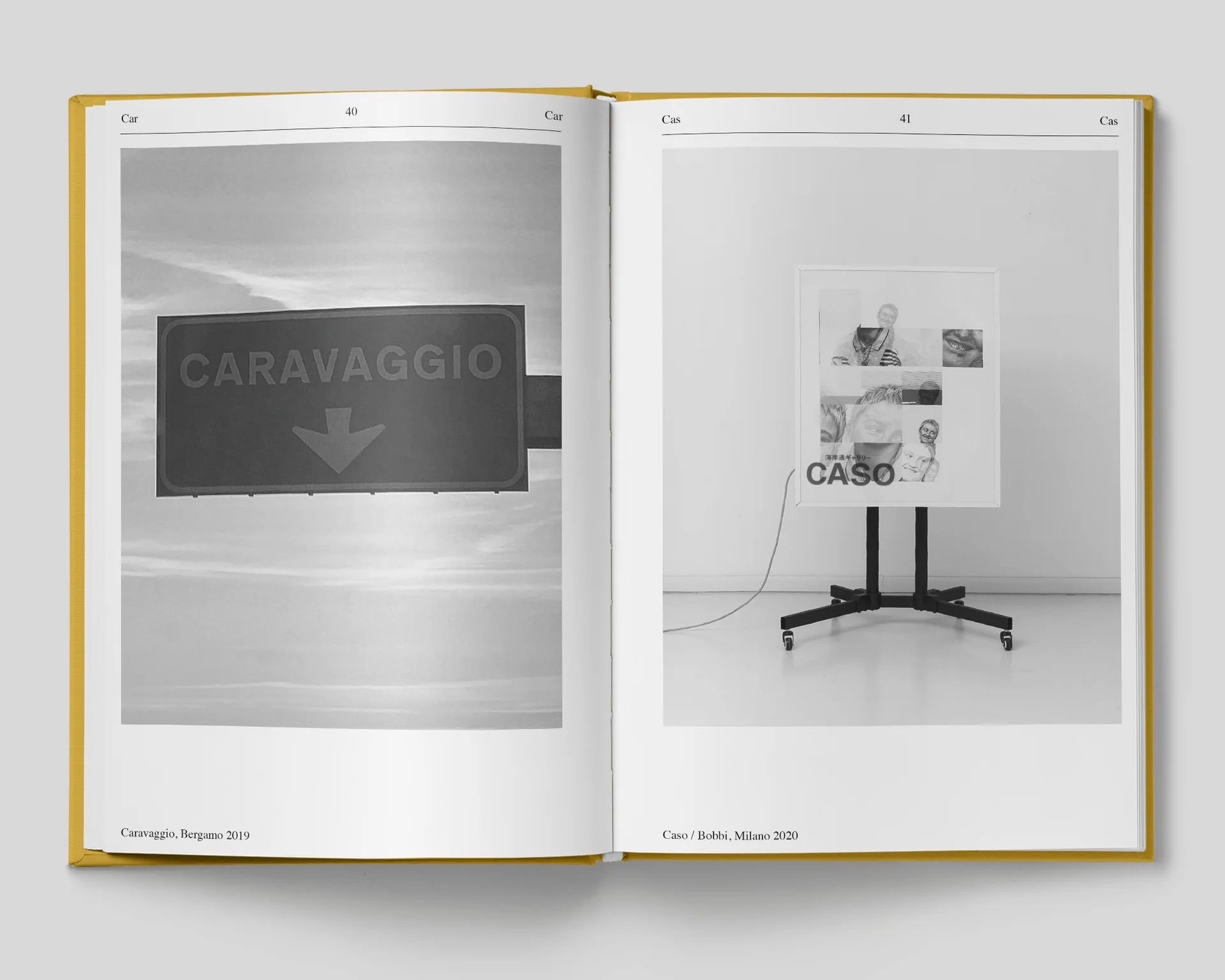
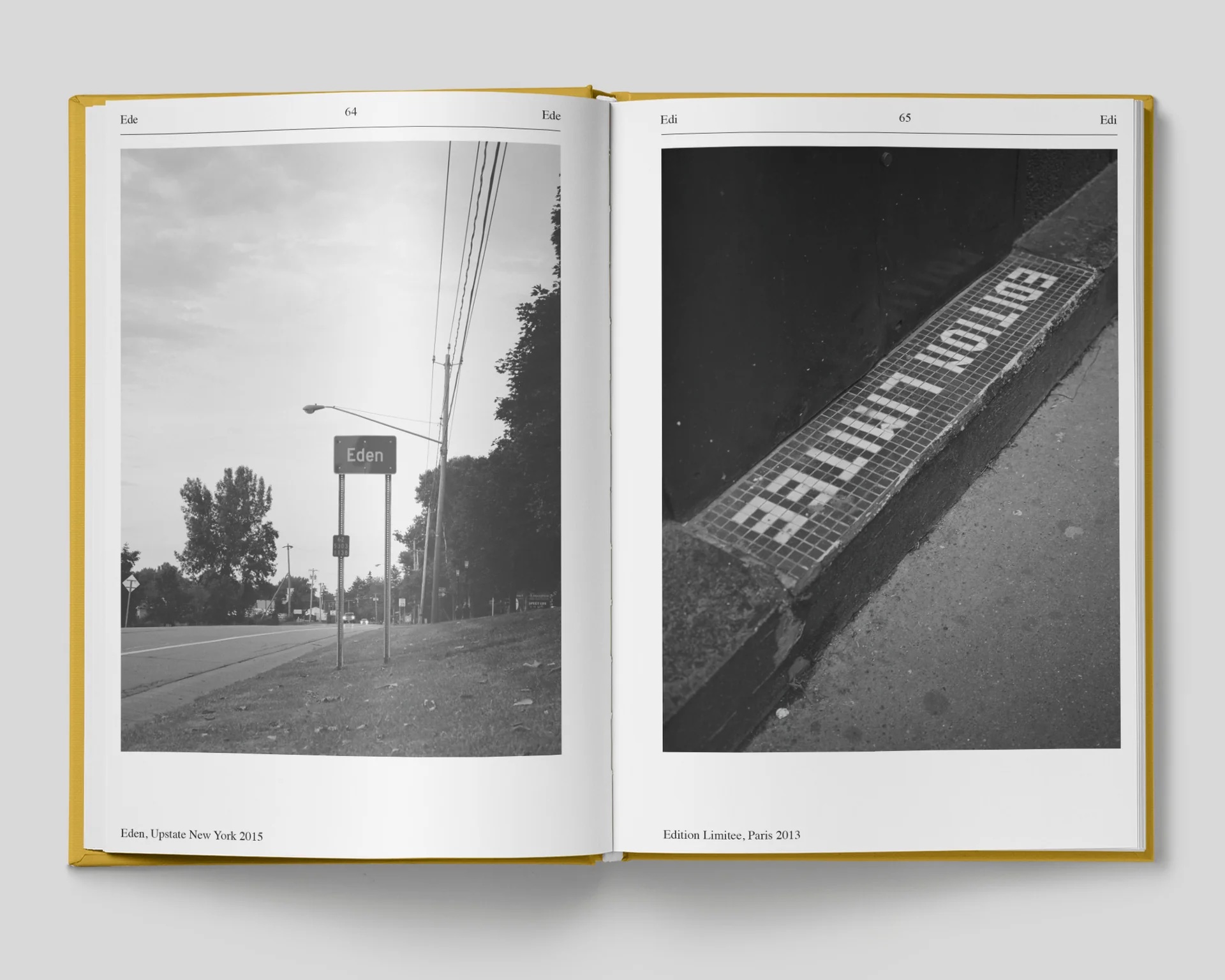
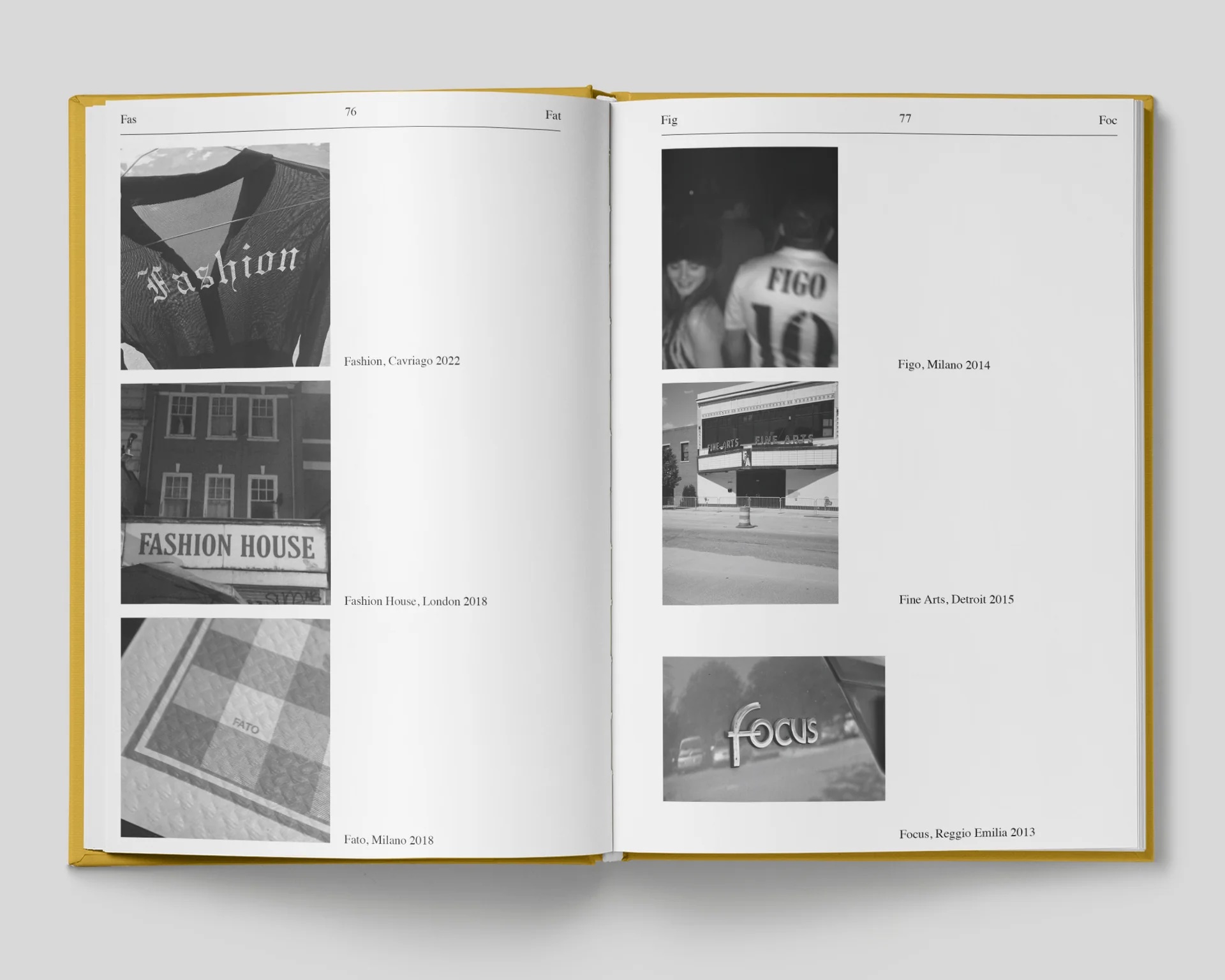
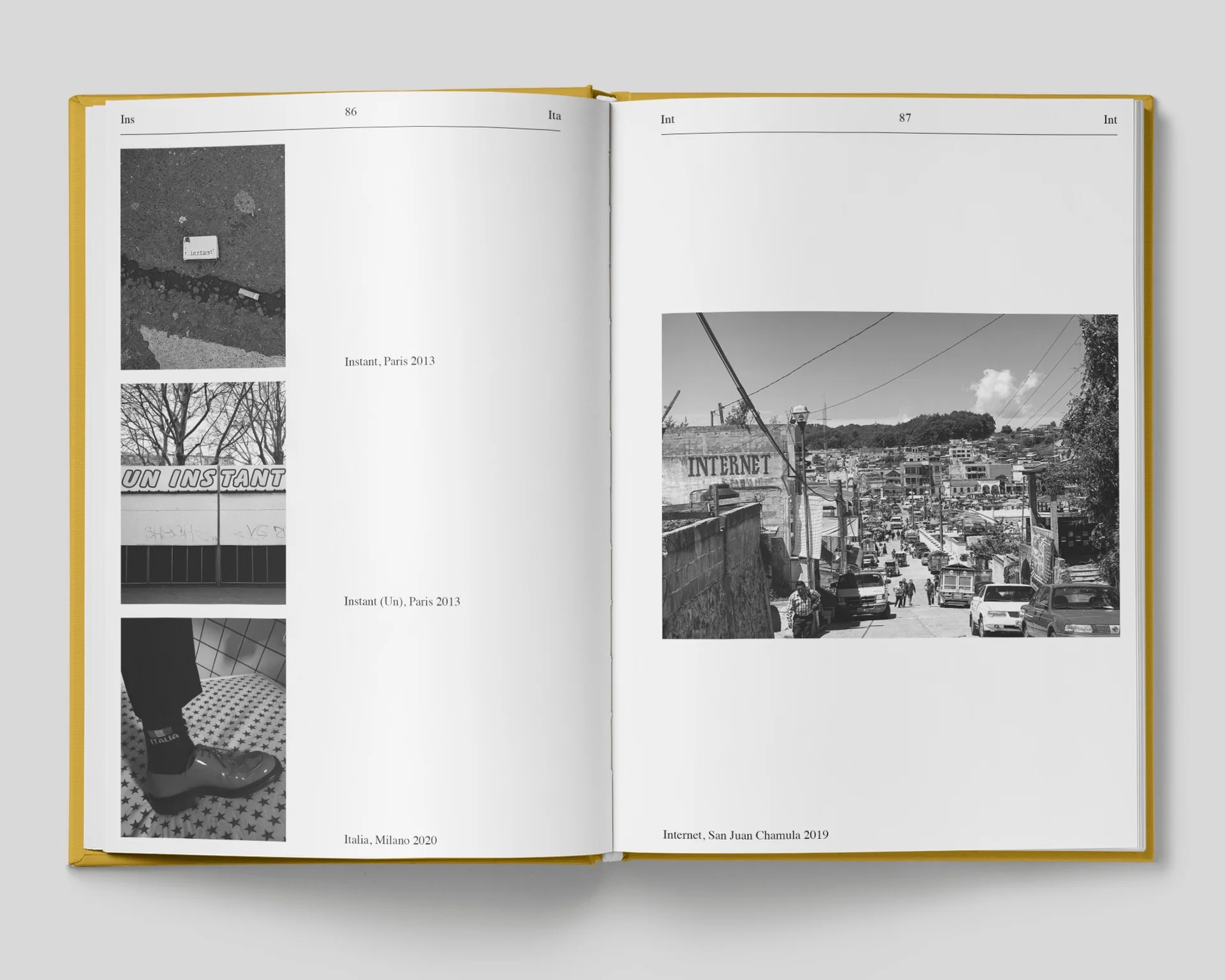




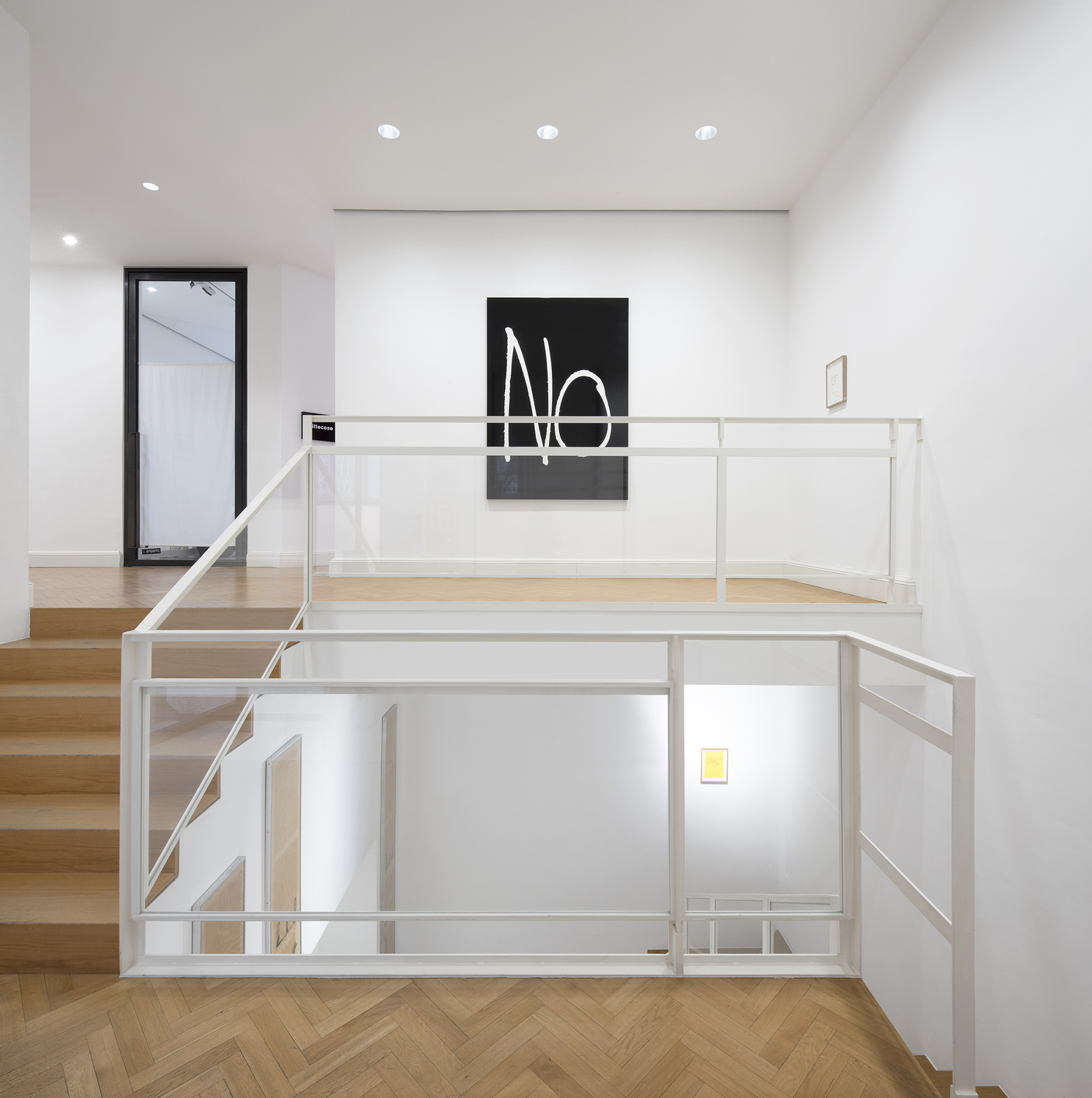


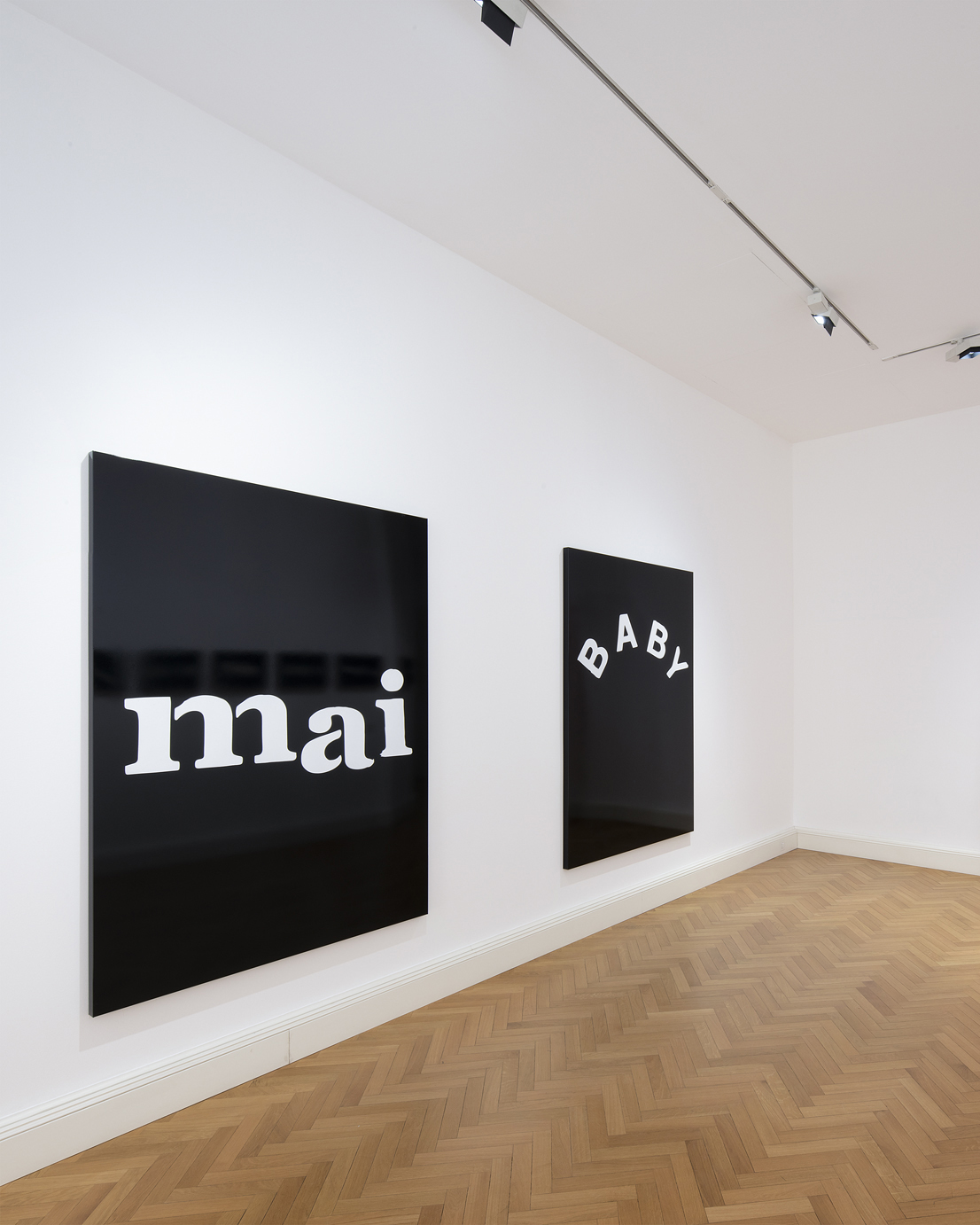





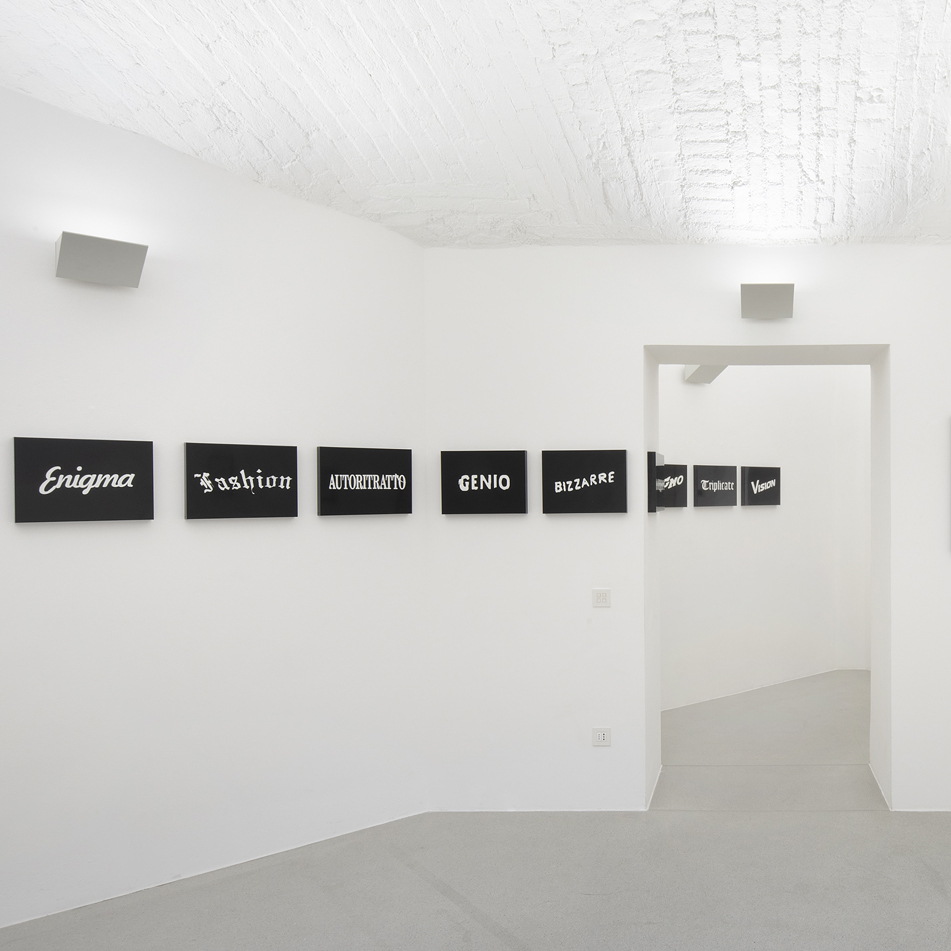



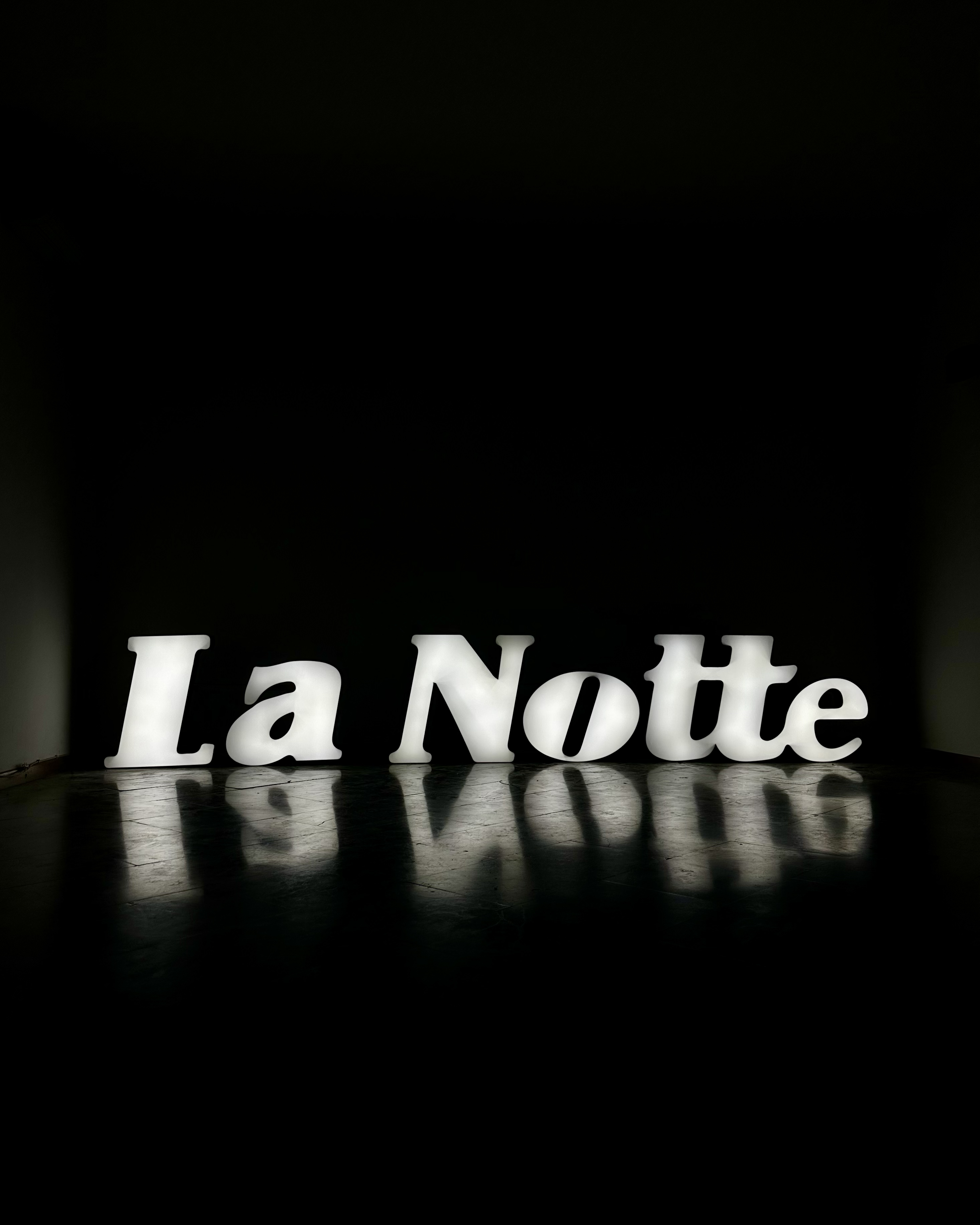























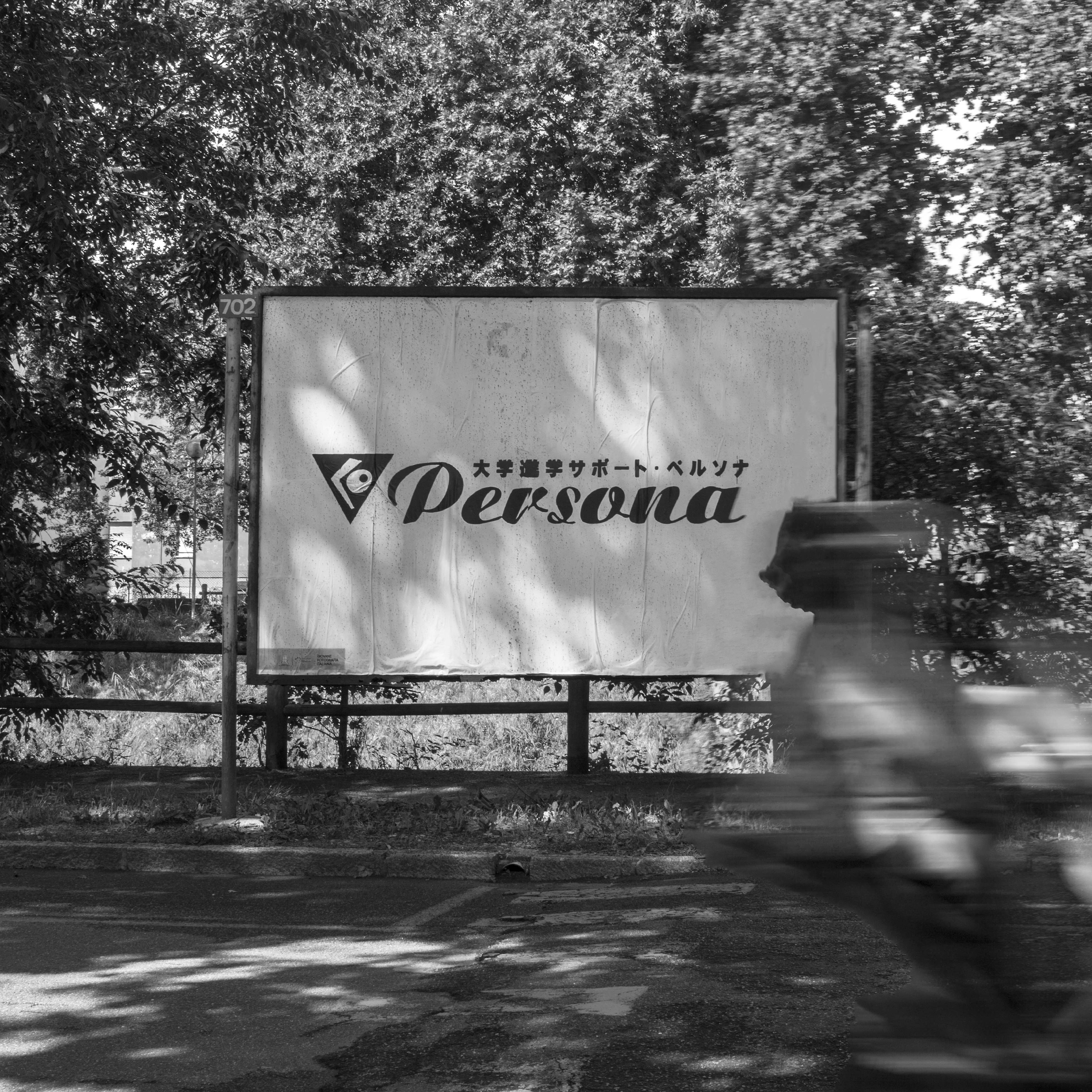
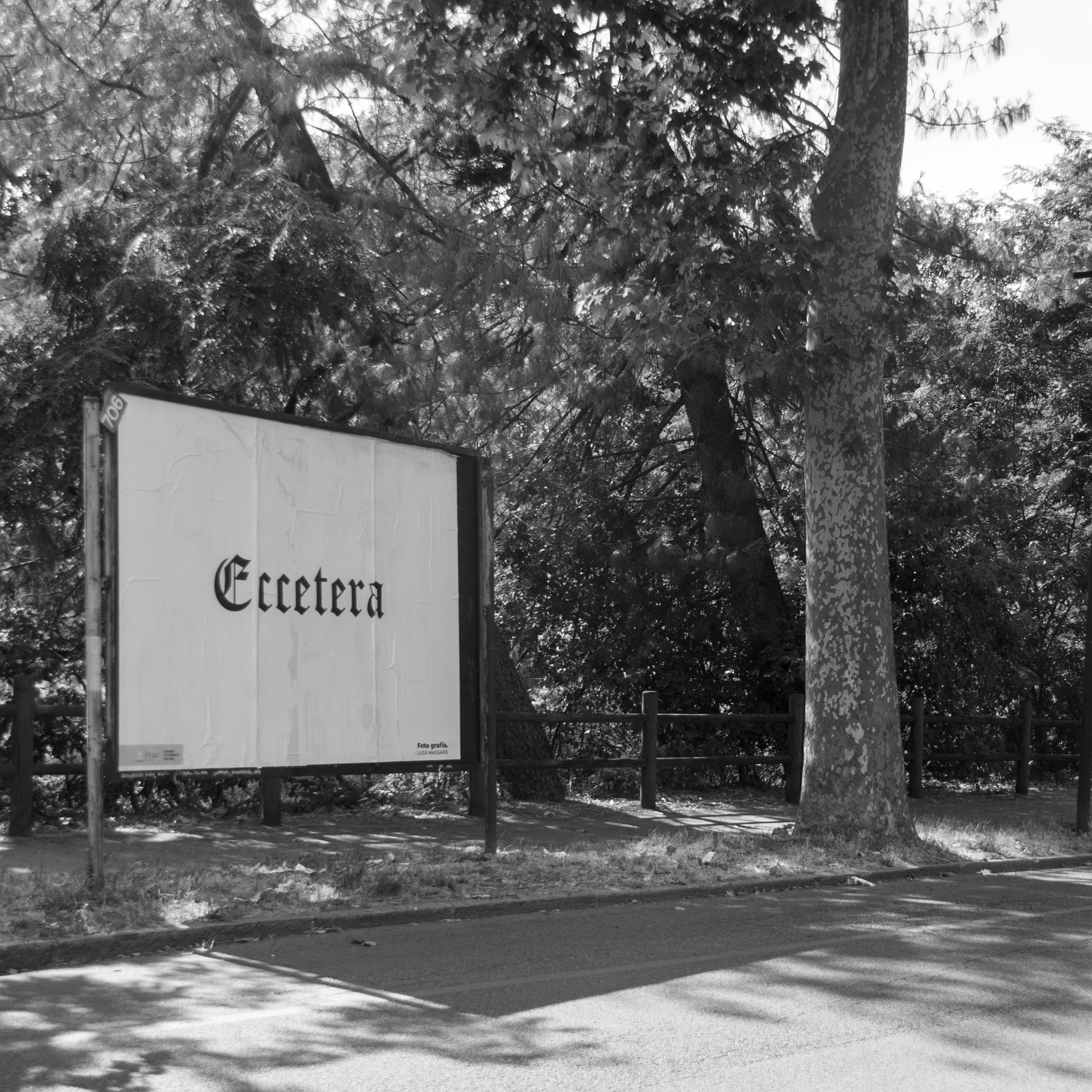



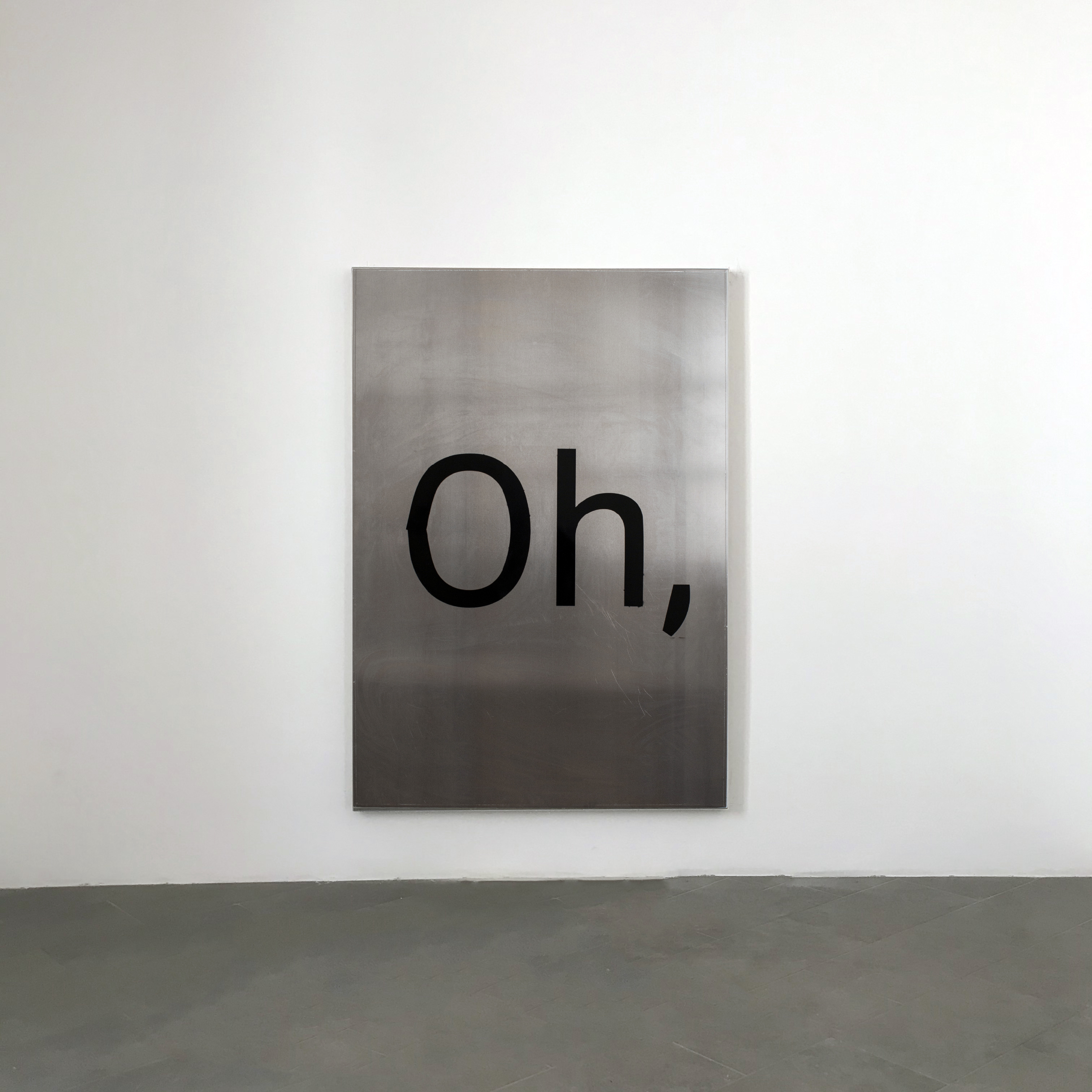

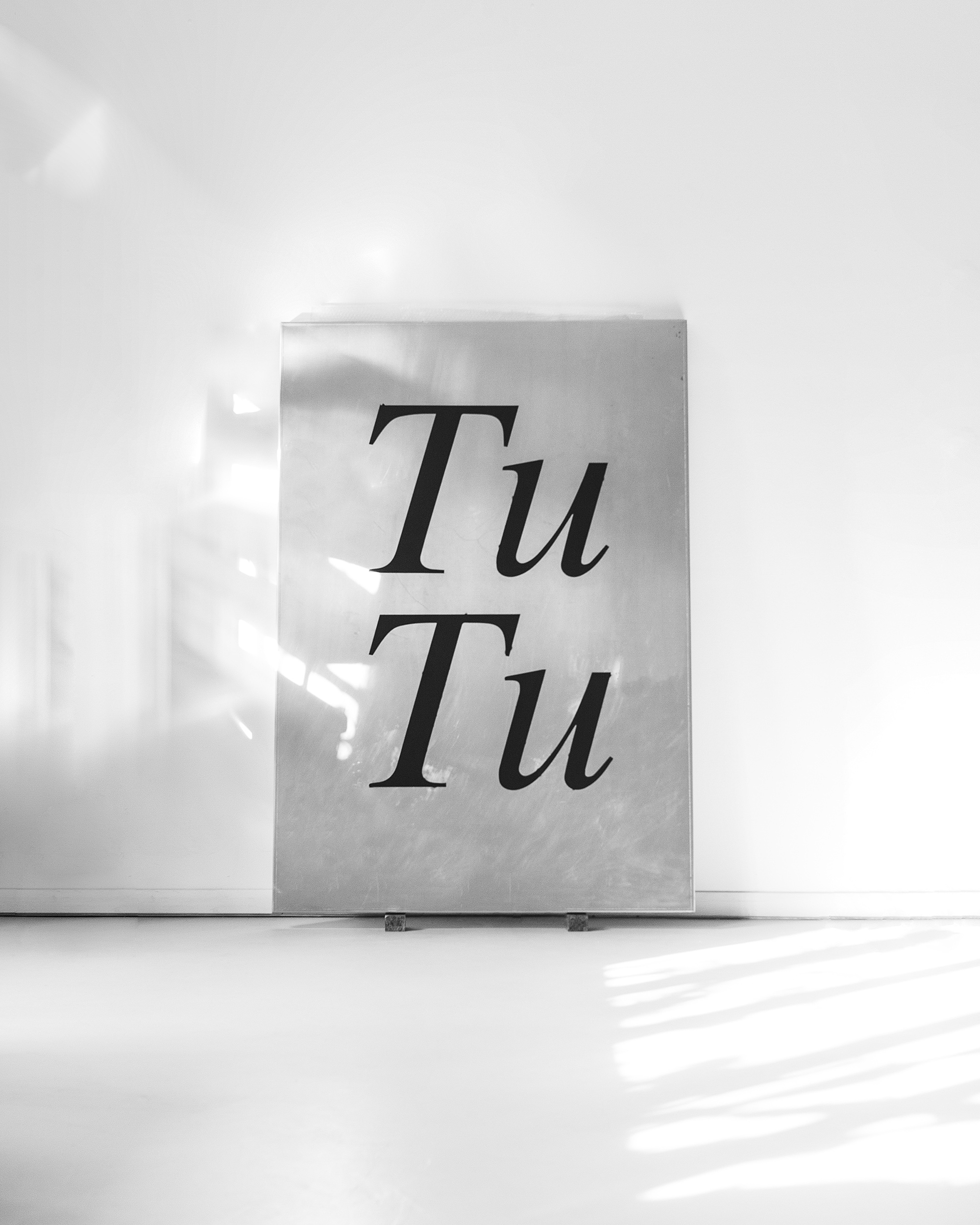


2012 – 2022
DIZIONARIO VOL.1
Art Paper Editions
First Edition of 700 Copies
February 2023
15 × 22 cm, 224 p, ills. b&w, linnen hardcover
ISBN 9789493146990
cover design by Jurgen Maelfeyt
book design by Gluqbar (G. Caboni, G. Spera, L. Massaro)
texts by Federica Chiochetti and Franco Bifo Berardi
“Il testo del dizionario è diventato soltanto la legenda della foto” – Vilém Flusser
SELECTED EXHIBITIONS
1. Winner Gibellina x Triennale Milano: Public Installation in Gibellina in collaboration with architect Anna Merci in July 2023.
8. MBAL Museum Group Show.
SELECTED PRESS
i-D UK Best Books of the Year
First Edition of 700 Copies
February 2023
15 × 22 cm, 224 p, ills. b&w, linnen hardcover
ISBN 9789493146990
cover design by Jurgen Maelfeyt
book design by Gluqbar (G. Caboni, G. Spera, L. Massaro)
texts by Federica Chiochetti and Franco Bifo Berardi
“Il testo del dizionario è diventato soltanto la legenda della foto” – Vilém Flusser
“Tutto quanto ti riguarda l’hai già vissuto nel corpo tipografico. La vita poi non ti resta che sviverla” – Carmelo Bene
Dizionario Vol.1 is the first of a series of encyclopedic collections of words photographed by Luca Massaro for the last 10 years, presented in book form in alphabetic order.
Each decade is supposed to produce a book with the same graphic design (Vol.1: 2012 - 2022 Vol.2: 2022 - 2032 etc..). The archives of around 1000 pictures are used as raw material for applications in site-specific installations.
SELECTED EXHIBITIONS
1. Winner Gibellina x Triennale Milano: Public Installation in Gibellina in collaboration with architect Anna Merci in July 2023.
2. Public Installation @ Istituto Italiano di Cultura Montevideo, curated by Ilaria Campioli & Daniele De Luigi, December 2021.
3. Public Billboards Installation in Reggio Emilia (“Spazio Libero” Giovane Fotografia Italiana) curated by Ilaria Campioli & Daniele De Luigi, introduction text by Franco Bifo Berardi, June 2020.
4. Photo Open Up Festival @ Museo Eremitani, curated by Carlo Sala, September 2020.
5. Abecedario D’Artista @ Parma Capitale della Cultura 2021.
6. “Overview” Collective Exhibition @ Viasaterna May 2022.
7. “Duetto” (double solo show) @ Viasaterna January 2023
8. MBAL Museum Group Show.
9. Book Launches at Triennale Museum, Offprint @Tate, Gibellina, PhMuseum, Leporello, LAABF @MoCA, Tokyo Art Book Fair..
10. Studio Blanco Installation & Book Launch x Fotografia Europea.
11. Best PhotoBooks of the Year @ Photo España.
12. Prix Du Livre Shortlist, Les Rencontres d’Arles 2023. 13.
13. Driving Energy @ Palazzo delle Esposizioni Roma, curated by Marco Delogu
SELECTED PRESS
